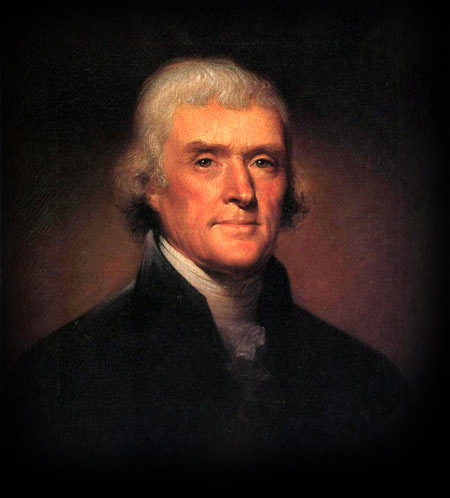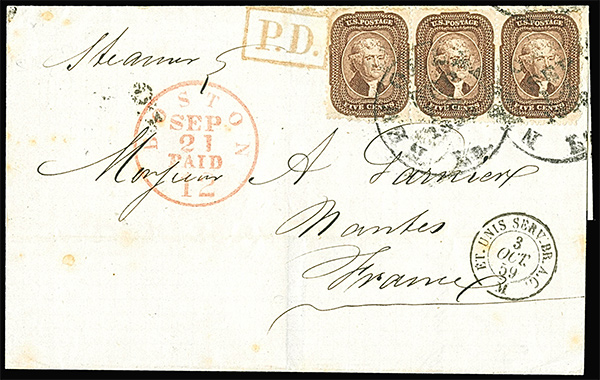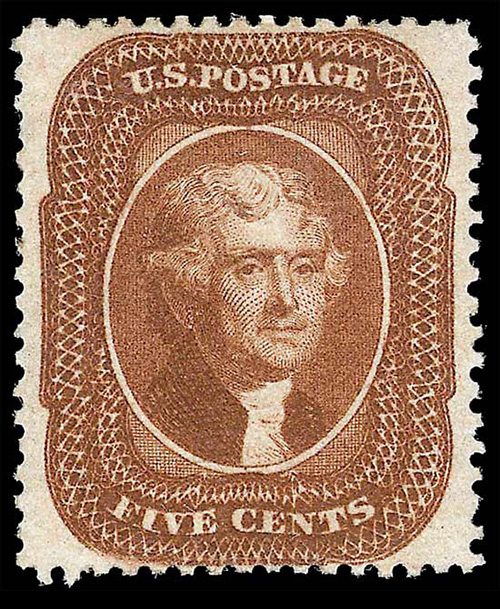Basic Info
5¢
Orange brown
TYPE II
Printing Method: Die-to-relief-to-plate transfer process
Printer: Toppan, Carpenter & Co.
Subject: Thomas Jefferson
Number issued: 570,000
Perforations: 15 to 15½
Watermark: Unwatermarked
Scott #: 30
Issued: May 8th, 1861
Value
Used
$150 - $300 (four margins)
$75 - $100 (three margins)
No postmark with gum (MH)
$650 - $1,000 (four margins)
Full perfect gum, no postmark
no trace of stamp hinge mark (MNH)
$1,000 - $1,100
Inspiration for the Design

Thomas Jefferson 1743-1826
painted by Rembrandt Peale 1778-1860
Painted in 1800 when Jefferson was 57
Located at the White House
A new printing

Prior to 1861 the majority of these 5¢ stamps had a New Orleans cancel and the destination was France. This is because 15¢ was the rate to France. As there was no 15¢ stamp at the time the most common use of stamps on mail to France was either three 5¢ stamps or one 10¢ stamp and one 5¢ stamp. As most of the descendants of France lived in New Orleans it is of no surprise to see this cancel on 5¢ stamps. However Louisiana ceded from the Union on January 26th, 1861, over four months before this stamp was issued. As New Orleans was in Confederate Territory and Union postage was no longer valid from Southern States the mail to France originating from the north, shifted from New Orleans to New York. Above is an example of a New York letter bound for France bearing the 15¢ rate comprised of three #30's
The plates used for the 1851 imperforate issue were carried over for the 1857 perforated issue. The last printing on these old plates was the brown shade of 1859, #29. By May 1860 these plates had worn out and new plates were made. These new plates had no protrusions at the top and bottom of the vignette frame, thereby allowing more room for the margins. These new plates are known as the type II design, of which this stamp #30, is an example.
Color


The orange brown shade has quite a broad color spectrum, two examples of this shade are shown above. Drag the line to the left or right to see more of each stamp

























